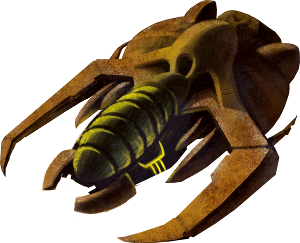Robin D. Laws's Blog, page 109
June 9, 2011
Ironroot Deception II

In Part Two of "The Ironroot Deception", my serialized short story featuring characters from The Worldwound Gambit, Gad's imperious elven captors lead him to a mysterious excavation site. There he discovers an old confederate, the halfling lockbreaker Vitta. Coincidence, or selling the gaffle?
Head on over to the Paizo Fiction blog, where ace illustrator J. P. Targete presents a way foxier vision of Vitta than I'd anticipated.
June 8, 2011
Pre-Prandial Link Review: Doyle Debut, Super Flare

Arthur Conan Doyle finally gets his first novel published. Don't give up hope, writers!
In case you hadn't caught the retro vibe of J. J. Abrams' Super 8, iconic 70s/80s poster illustrator Drew Struzan underlines the point. And yes, the image's focal point is a lens flare.
Types of Horror Protagonist

A previous post on the picaresque hero led to the question of the horror protagonist. Is he a dramatic, picaresque, or iconic hero—or something else?
I'd answer that the horror genre does not impose a single  heroic type on its protagonists.
heroic type on its protagonists.
First of all, horror heroes sometimes overcome triumph over horrific forces and are sometimes overcome in turn.
A hero who beats back terrifying threats on an ongoing basis, whether he be Carnacki or Constantine, is surely a classic iconic hero. He wins by staying true to himself and his iconic ethos.
A non-continuing hero might still win against horror by staying true to him- or herself. The final girl in the slasher pic often conforms to this pattern. I'll leave it to fans of that sub-genre to work out how often this happens. This character follows the iconic pattern without recurring.
A protagonist who wins by changing, by undergoing an arc from one emotional condition to another, is a dramatic hero.
Winning is not what we associate with horror, though. The protagonist who is destroyed might be a subset of dramatic hero, the tragic hero. Aristotle tells us that the tragic hero is brought low by an internal flaw, which leads to a grave mistake. Awareness of this mistake comes only after it's too late to rectify: this is his anagnorisis. His arc is from a state of unawareness to one of belated awareness.
The horror character whose benighted inquiries into secrets better left unplumbed, who arrogantly confronts horror, has a moment of italicized realization and is then destroyed, is a classic Aristotelian tragic hero. These stories occur in a humanocentric moral universe, where bad things happen to flawed people. The forces of horror function on one level as cosmic judgment.
Modern horror stories may occur in a nonteleological universe, where random awful shit happens to the undeserving. Just like real life. Realization means nothing in this context because nothings means anything. These are melodramatic heroes, who react when acted upon.
Graduate seminar question: if many of his heroes are destroyed for their foolish inquiries into the amorality and indifference of cosmic forces, are Lovecraft's characters tragic or melodramatic? How nonteleological is HPL, really?
June 7, 2011
How Playtesting Changed Ashen Stars Ship Combat

Apropos of playtesting, here's a case study of the biggest element that changed in Ashen Stars. (By the way, we got the 200+ Stellar Nursery pre-orders we needed to fund the print run. If you haven't grabbed your advance goodie bag yet, you can still help put us all the way in the black.)
When Simon gave the greenlight to the original Ashen Stars pitch (then called Bleeding Stars, later Into the Bleed), he asked me to consider an idea he had for ship combat. Each member on the crew would have something to do during space battles. They'd also be competing for system resources, facing a temptation to route power from other stations in order to do well themselves. Along the way we dropped the idea that players will be at odds with one another because it just doesn't match what they want to do during a joint fight against an enemy. Their instinct, and rightfully so, is to cooperate. I could have designed some sort of kill-stealing mechanism, where there is only so much glory to go around, but there were already better systems in the game that pitted individual selfishness against group imperatives. This one we could afford to let fall by the wayside.
My first go-round at the first idea, that everybody has something to do in space combat, took the idea too literally. Each player had something different to do in every single round of a ship fight. This led to a long, hard-to-remember sequence of events. Mechanically each stage worked differently, with varying levels of influence on the outcome.
In playtest, both in-house and otherwise, we found that most (but not all) groups had problems with the complexity of the system, and the low payoff for that complexity. Although ripping the system out and plugging in a new one from scratch was more work for me and would require a more involved second playtest round, it had to be done.
The replacement system took a step back from trying to simulate the jobs of the various crew positions. This is what the first system should have done, as GUMSHOE in general emulates genre structures and doesn't attempt to simulate imaginary realities. It became more abstract, and more like hand-to-hand combat. Now each player is the focus for a single exchange, just as they are for an attack in a fight between characters. The final version feels tactical, because the group together decides which enemy sub-systems to degrade when they hit, and what order to use their ship's weak and strong suits. (This is the brilliant stroke of Gregor Hutton's 3:16—it feels like you're making tactical decisions, although you aren't, particularly.)
It would have saved me time to arrive at the final version out of the gate. But I wouldn't have gotten there without having done it the obvious and mistaken way first. Only by cutting through its complexity to something simpler did I get the more original and more enjoyable space combat you'll find in the published version.
June 6, 2011
Pre-Prandial Link Review: Flat Flares, Midlife Gamers, MP3 Legality

Star Trek 2 will not be in 3D. Because, what the heck would they do with all those lens flares?
Study shows that the average video gamer is 37, and the purchaser who buys the most games is 41.
To me, the most interesting aspect of the Apple iCloud announcement is that it provides users a backdoor license legitimating previously illicit downloads.
The Birds
June 3, 2011
Pre-Prandial Link Review: Funded Stars, Gilliam's Faust, Tippling Fungus, Carrion Cops

Thanks to the discerning early-adopting of our corps of Ashen Stars pre-orders, we've hit our target for the Stellar Nursery Edition. That means the gorgeous color print run has indeed been financed.
Another reason to envy Londoners: Terry Gilliam stages production of Berlioz' Damnation of Faust.
Mystery fungus grows on stainless steel, likes Canadian Club.
Vulture Detectives: new GUMSHOE game, or real thing German police are actually doing?
Korad: Polling Threniri, Home of Living Runes

Last week we pitched ideas for Threniri, where the largest group is not the humans, but the sentient runes known as the Aesigil, who enter into symbiotic mergers with human hosts. I have taken the liberty of adding a suggestion of my own to the poll below.
Once we get the result, I'll see if it tells us enough about the Aesigil themselves, or if we need a separate round of pitching and polling to further delineate them.
View Poll: Threniri
June 2, 2011
The Ironroot Deception I

My new serialized short story, "The Ironroot Deception", has started over at the Paizo blog. It features Gad, the wily mastermind hero of my just-released Pathfinder Tales novel, The Worldwound Gambit. And who knows, maybe another member of its cast of sword and sorcery heisters will show up later on. Here Gad finds himself literally and figuratively upended, an aspiring elf queen pressgangs him into forced labor on a mysterious project.
Accompanying the piece is a fine image of Gad from illustrator Eric Belisle. While many readers of the book, including editor James L. Sutter, have namechecked George Clooney as perfect imaginary casting, Eric's piece places him somewhere on the Nathan Fillion / John Corbett continuum. Personally I picture a young Burt Lancaster or sword-slinging Cary Grant, perhaps because neither are able to sue me.
Check it out!



